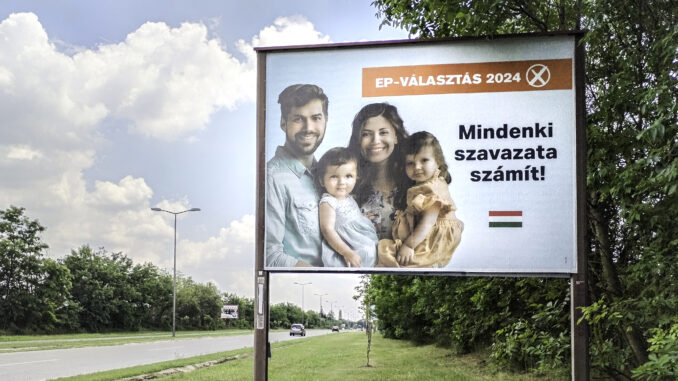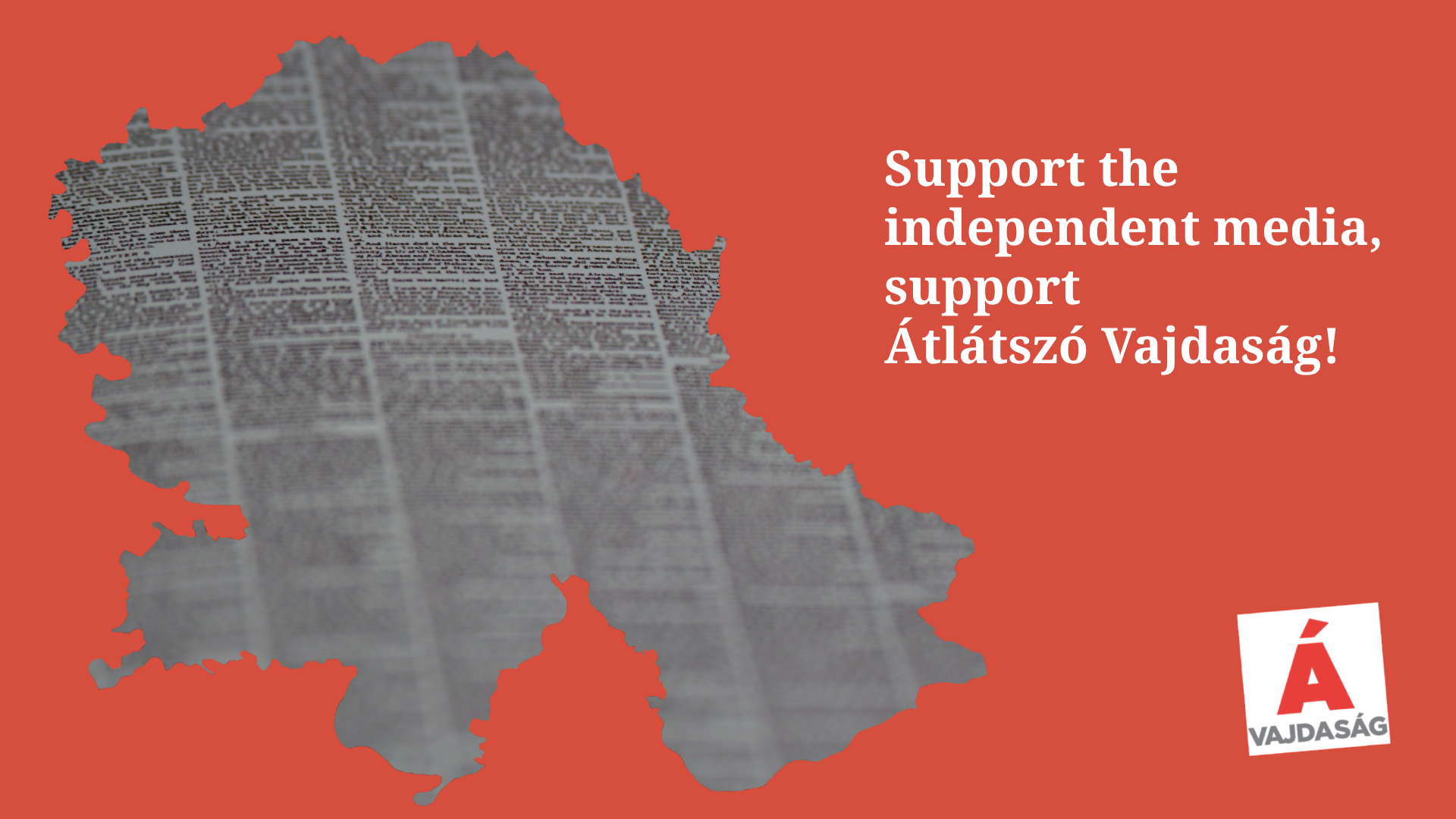
The Hungarians of Vojvodina have participated in two elections recently: on 2 June, in the local elections in Serbia, and on 9 June, in the elections of the Hungarian members of the European Parliament. The latter was open to dual citizens who had registered in advance on the electoral roll for the European Parliament elections in Hungary.
 The Alliance of Vojvodina Hungarians (VMSZ) ran parallel campaigns in the run-up to the elections, encouraging citizens to participate in both elections.
The Alliance of Vojvodina Hungarians (VMSZ) ran parallel campaigns in the run-up to the elections, encouraging citizens to participate in both elections.
We wanted to know how did emigration, dual citizenship and voter registration affected the turnout in the Serbian local elections and the EP elections in Hungary.
Election Results in Serbia Do Not Reflect the Scale of Emigration – at Least, Not Yet
As in the previous two elections, the Alliance has launched candidate lists in twenty-three out of forty-five municipalities in Vojvodina for the 2024 municipal elections. The strongest Hungarian party in Vojvodina still gets most of the votes in North Bačka: in Subotica, Bačka Topola and in the towns along River Tisza.
According to the total number of votes, in view of the previous local election results,
the Alliance achieved its second best result in the last twelve years with 57,725 votes.
Despite a victorious decade, the Alliance lost more than 10,000 votes overall. Seven municipalities saw a drop of more than 20% in votes for the party, while in Subotica, where most of the ethnic Hungarians live, there was a noticeable negative record; namely, 3,354 fewer Hungarians voted for the party, and it is a 19.58% drop compared to 2020.
The results of both types of elections in Serbia show that there was a slight decline in the support of the party around 2012, when the Democratic Party’s popularity among Hungarians increased, and also in 2016, when the conflicts within the party resulted in the foundation of Hungarian Movement, which has since only been active in a couple of municipalities.
In the above graphs, only the Alliance’s results are shown. The reason for this is, that in the present political arena of the Hungarians in Vojvodina, the only contenders of the party, at best, are local opposition or civic groups. Thus it would be difficult to measure the support of the opposition within the Hungarian minority.
Cold Calculation and Ideological Humbug
The possibility to vote by post has existed in Hungary since the 2014 parliamentary elections. The Hungarian Parliament, after the successful ousting of the MSZP government in May 2010, announced the System of National Cooperation, which states:
“The Government of National Affairs will make Hungarians living beyond the borders part of the System of National Cooperation.”
It subsequently amended the law on Hungarian citizenship, and introduced a preferential naturalisation procedure, while in 2013 adopted a new electoral law allowing voters without a Hungarian official address to be included on the electoral roll of postal voters.
Therefore, Hungarian citizens living abroad could participate in the re-election of the second Orbán government,
– although a rather small proportion of them took advantage of this opportunity then.
In preparation for the 2018 parliamentary elections, and again, ahead of the 2022 parliamentary elections, the Alliance launched a field campaign to encourage people to register and vote.
The timeline from the introduction of dual citizenship for Hungarians living abroad and the right to vote in Hungary until today. Time Graphics
The integrity of postal votes was as questionable in this year’s EP elections as it was in the 2022 parliamentary elections.
The Concordia Minoritatis Hungaricae Civic Association (CMH), which was originally in charge of distributing ballott papers, sent out a press release in April, informing the media about the help available to Hungarian citizens in Vojvodina without residence in Hungary to register in the electoral roll or notify the authorities about any change in their personal data. The CMH has offices in six towns, and in other municipalities the CMH’s external staff were available.
In settlements, where there was no CMH office or external staff at disposal, the contact details of the party’s local office or office manager were given.
The registration campaign was followed by the distribution of the ballott papers, which, according to readers’ reports, was also assisted by the party’s activists. Although – to avoid the negative publicity from two years ago –, the party made sure, that voters whose votes they could not count on for sure, would find the parcels in their mailboxes, many others received them personally. They could even ask for help in filling in and collecting them, if they so wished.
According to 2023 data, 190,389 Hungarians in Vojvodina have dual citizenship. Of these, 66,704 registered for the EP elections and 40,712 cast a valid vote, which is more than 60% of the total number of registered voters.
There are no specific data on the National Election Office (NEC) website on how many votes were received for each list at national level from the postal ballotts. The aggregated results only show that Fidesz–KDNP received 90.03% of the valid votes, and that of the 59,008 valid votes via mail, the 40,712 votes from Serbia account for almost 70% of all valid postal ballotts.
Despite continuous campaigns, the number of people participating in the Hungarian elections – or at least casting a valid vote – is not increasing. Regarding the average results of the party’s voters in Serbia, the turnout was 30% lower in the last voting by post.
Meanwhile, the Map of the Hungarian Population in Vojvodina is Being Redrawn
Previously Átlátszó Vajdaság published a detailed article on how the number of Hungarians in Vojvodina has changed over the past ten years. The number of those who declare themselves Hungarian has decreased from 253,899 to 184,442 in 11 years, and the number of those who declare themselves Hungarian-speaking is even lower.
After the publication of the census data in April 2023, the Alliance issued a statement rejecting its own responsibility: “In the days following the publication of the figures, more and more people have been proclaiming national unification and Hungarian citizenship as the main culprit for the census figures.
The Alliance of Vojvodina Hungarians hereby rejects this standpoint in the strongest possible terms, especially because it is politically short-sighted, morally worrisome, deeply and sinfully insulting and humiliating to tens of thousands of Hungarians in Vojvodina who have applied for Hungarian citizenship. We, on our part, have always and most strongly rejected such opinion and will do so in the future as well. We did our deeds in this regard over the last more than ten years, when
we encouraged the Hungarians in Vojvodina to take advantage of the opportunity and the possibility of the national reunification.
The Presidency firmly believes that this was the only honest, acceptable position and procedure for the Alliance.”
Of course, the decline in the number of Hungarians in Vojvodina is more complex rather than simply blame it on the institution of dual citizenship only. According to Róbert Badis, sociologist the drop in the number of Hungarians in Vojvodina is caused by three factors: low birth rate, emigration and assimilation.
Influenced by these factors, the Hungarian population in Vojvodina has entered a negative demographic spiral, and the introduction of the simplified naturalisation procedure has accelerated it by an estimated 40%.
This emigration process – indirectly attributable to dual citizenship and the EU passport that goes with it – could not be prevented even by the hundreds of billions of forints that the Hungarian government has so far disbursed to Vojvodina through the Prosperitati Foundation, the Bethlen Gábor Fund Management Ltd. and other supporting bodies.
Text: Virág Gyurkovics
Data visualisation: Krisztián Szabó (Átlátszó), Andrea Dancsó (Átlátszó Vajdaság)
Cover photo: Fidesz–KDNP campaigned in Vojvodina as well: An EP-billboard on the road to Palic. Source: Átlátszó Vajdaság
The text was originally published in Hungarian on 19. 06. 2024.